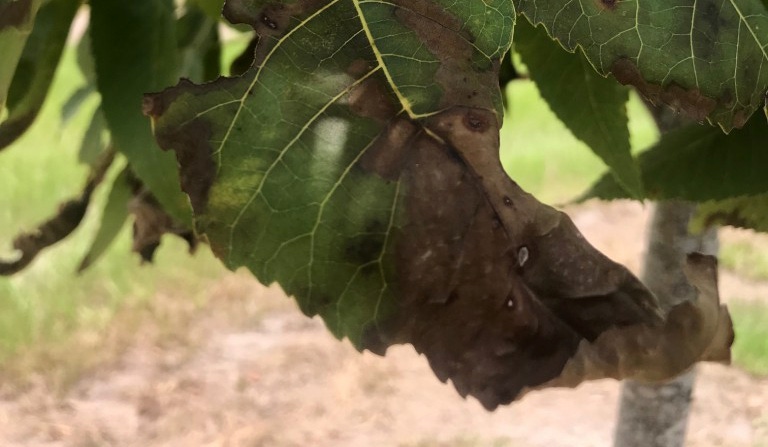July 29, 2019

Georgia pecan growers have cleaned up the initial debris of uprooted trees and broken limbs, but nine months after Hurricane Michael, the trees that survived show signs of abuse.
In a July 10 post to his blog, Dr. Lenny Wells, University of Georgia Extension pecan specialist, says he had received calls from “different parts of the state regarding trees (usually in the range of 2 years old up to 12-15 years old) exhibiting dieback of branches/central leader and leaf burning or scorching.”
In cases, he says, it is more severe than normal leaf scorching seen on young trees. Some trees have actually died. Symptoms begin as a few shoots dying back and it progresses rapidly from there.
Wells says anytime leaf scorching and dieback happen like this, there is some damage to the root or vascular system. During a hurricane, particularly one as violent as Michael, trees take a beating and are whipped around for an extended period. Though it doesn’t blow the tree down, the high winds often still breaks roots below ground.
“We have been expecting to see this based on what we know from previous hurricanes in other areas. Given the widespread hurricane damage with Michael and the widespread occurrence of this problem, I attribute this to delayed hurricane damage.
“The only thing you can really do for this is cut the tree back to improve the root to shoot ratio and keep it well watered. The more severe the die-back is when observed, the more you need to cut the tree back. The worst trees may need to be cut back by half if the cambium is still green under the bark,” he says.
About the Author(s)
You May Also Like






